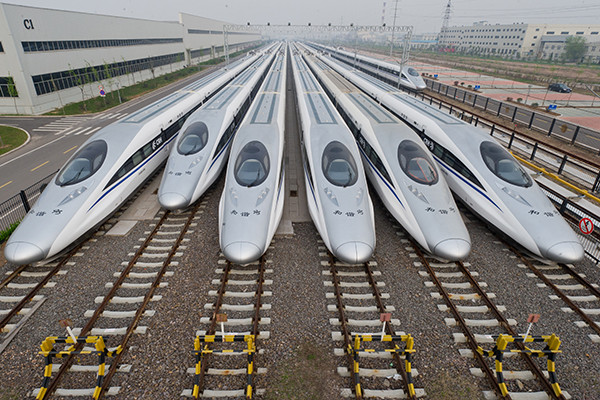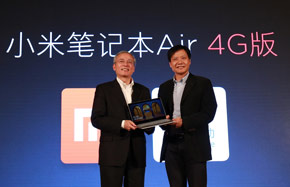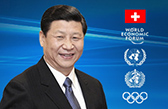Long-term evolution
Before 1990:
It was an era in which paging device manufacturers made a great deal of money from thousands of millions of Chinese wearing pagers, a wireless telecommunications device that received and displayed numeric or text messages.
The paging system marked the start of people utilizing mobile communications at a time when fixed line telephones dominated. In 1987 for example, mobile telecommunication was still regarded as a sensitive industry that raised national security issues and even ideological debates. By the end of 1987, the number of mobile phone users only numbered about 700 in China.
However, as early as April 1973, Martin Cooper had announced his invention of the world's first portable telephone in a Motorola laboratory in New York. After more than a decade, the brick-like Motorola handset hit the Chinese market and was known as a dageda (big brother).
In 1987, China's first analog cellular mobile phone system was developed and put into service in Guangdong province. The introduction of Motorola cellphones signified that China had officially stepped into the mobile age. A dageda typically cost more than 20,000 yuan ($3,210) at the time so only rich people could afford them.
1990-2000:
In 1993, China's first all-digital mobile network, based on the global system of mobile communication (GSM) standard, was launched. GSM technology is regarded as the second generation (2G) mobile standard.
To speed up the 2G mobile telecommunication development, the Chinese government set up China United Communications Ltd on July 19, 1994, to handle the mobile telecom business. The company was then the first market competitor with the former ministry of post and telecommunications for the mobile business.
In March, 1998, the Ministry of Industry and Information Technology was set up with the merger of the former MPT and the former ministry of electronics industry. It has been the regulatory authority for China's mobile communications industry ever since.
During the same year, Chinese telecom operators started to offer short messaging services. They quickly became popular among most mobile phone users. Chinese people love to send greetings, express interests, swap information or tell jokes via short words on cellphones.
During holidays, especially the traditional Chinese Spring Festival, people will exchange blessings via text messages with family members and close or distant friends.
2000-2010:
On April 20, 2000, China Mobile Communications Corp was established.
From 2000 to 2007, mobile phones started to get smaller and became more affordable. The mobile penetration rate in China grew rapidly. Urban citizens as well as people in more remote areas became mobile phone subscribers.
The Finnish company Nokia achieved tremendous success in China during the period. Nokia cell phones, which mostly ran on the Symbian operating system, dominated more than half of China's mobile phone market.
In 2007, Steve Jobs, the founder of Apple Inc, introduced the world's first iPhone handset. The iPhone series devices, featuring good user experiences and rich applications, attracted fans across the globe.
In 2008, after several mergers and restructuring in the domestic telecoms industry, China Mobile, China Unicom and China Telecom were three telecom operators granted the right to run a mobile business in China.
In 2009, the Ministry of Industry and Information Technology issued 3G licenses. From then on, the three Chinese telecom operators began to construct nationwide 3G networks.
However, different carriers adopted different 3G standards. China Mobile, the country's largest mobile operator, deployed a 3G network based on a Chinese homegrown technology - Time Division-Synchronous Code Division Multiple Access (TD-SCDMA).
China Unicom adopted the Wideband Code-Division Multiple Access technology and China Telecom applied the Code-Division Multiple Access 2000 standard.
In November 2009, China Unicom became the first Chinese telecom operator to cooperate with Apple and introduced an iPhone handset contract.
After the introduction of iPhone devices, China entered into the smartphone age. Initially the price of smartphones was much higher than feature phones.
After 2010:
In the third quarter of 2011, China overtook the United States to become the world's largest smartphone market by shipment, according to a report from research firm Strategy Analytics. Chinese mobile phone manufacturers, including ZTE, Huawei and Lenovo, have emerged as the top-level smartphone companies in the world.
In early 2011, China Mobile started wide-ranging tests of TD-LTE technologies in six major Chinese cities, including Shanghai, Guangzhou and Shenzhen. After that, China Mobile gradually expanded the trial city numbers.
At the 2013 Mobile World Congress held in Barcelona, Spain, China Mobile chairman Xi Guohua said China Mobile aims to deploy the world's biggest 4G TD-LTE network in China this year, covering more than half a billion people.
In March, the Minister of Industry and Information Technology Miao Wei said the Chinese government would probably issue 4G licenses to telecom operators this year.























